Protectorate
A protectorate, in its inception adopted by modern international law, is a dependent territory that has been granted local autonomy and some independence while still recognizing the suzerainty of a greater sovereign state. In exchange for this, the protectorate usually accepts specified obligations, which may vary greatly, depending on the real nature of their relationship. Therefore, a protectorate is an autonomous area under a higher sovereignty. They are different from colonies as they have local rulers and rarely experience immigration of settlers from the suzerain state.
| Part of the Politics series | ||||||||
| Basic forms of government | ||||||||
|---|---|---|---|---|---|---|---|---|
| Power structure | ||||||||
|
||||||||
| Power source | ||||||||
|
||||||||
| Power ideology | ||||||||
|
||||||||
| Politics portal | ||||||||
However, a state that remains under the protection of another state while retaining its independence is known as a protected state, different from a protectorate.
Rationale
Amical protection
In amical protection, the terms are often very favorable for the protectorate. The political interest of the protector is frequently moral (a matter of accepted moral obligation, prestige, ideology, internal popularity, or dynastic, historical, or ethno-cultural ties). Or the protector's interest is in countering a rival or enemy power (e.g., preventing the rival from obtaining or maintaining control of areas of strategic importance). This may involve a very weak protectorate surrendering control of its external relations; this, however, may not constitute any real sacrifice, as the protectorate may not have been able to have similar use of them without the protector's strength.
Amical protection was frequently extended by the great powers to other Christian (generally European) states and to smaller states that had no significant importance. In the post-1815 period, non-Christian states (such as China's Qing dynasty) also provided amical protection towards other much weaker states.
In modern times, a form of amical protection can be seen as an important or defining feature of microstates. According to the definition proposed by Dumienski (2014): "microstates are modern protected states, i.e. sovereign states that have been able to unilaterally depute certain attributes of sovereignty to larger powers in exchange for benign protection of their political and economic viability against their geographic or demographic constraints".[1] Examples of microstates understood as modern protected states include Andorra, Bhutan,[2] Liechtenstein, San Marino, Monaco, Niue, the Cook Islands, and Palau.
Colonial protection
Conditions regarding protection are generally much less generous for areas of colonial protection. The protectorate was often reduced to a de facto condition similar to a colony, but the pre-existing native state continuing as the agent of indirect rule. Occasionally, a protectorate was established by another form of indirect rule: a chartered company, which becomes a de facto state in its European home state (but geographically overseas), allowed to be an independent country with its own foreign policy and generally its own armed forces.
In fact, protectorates were declared despite not being duly entered into by the traditional states supposedly being protected, or only by a party of dubious authority in those states. Colonial protectors frequently decided to reshuffle several protectorates into a new, artificial unit without consulting the protectorates, a logic disrespectful of the theoretical duty of a protector to help maintain its protectorates' status and integrity. The Berlin agreement of February 26, 1885 allowed European colonial powers to establish protectorates in Black Africa (the last region to be divided among them) by diplomatic notification, even without actual possession on the ground. This aspect of history is referred to as the Scramble for Africa. A similar case is the formal use of such terms as colony and protectorate for an amalgamation, convenient only for the colonizer or protector, of adjacent territories over which it held (de facto) sway by protective or "raw" colonial logic.
Foreign relations
In practice, a protectorate often has direct foreign relations only with the protecting power, so other states must deal with it by approaching the protector. Similarly, the protectorate rarely takes military action on its own, but relies on the protector for its defence. This is distinct from annexation in that the protector has no formal power to control the internal affairs of the protectorate.
Protectorates differ from League of Nations mandates and their successors, United Nations Trust Territories, whose administration is supervised, in varying degrees, by the international community. A protectorate formally enters into the protection through a bilateral agreement with the protector, while international mandates are stewarded by the world community-representing body, with or without a de facto administering power.
British protectorates
Americas
.svg.png)

Arab world

- Eastern Protectorate States (mostly in Haudhramaut); later the Protectorate of South Arabia (1963–1967)
- Western Protectorate States; later the Federation of South Arabia (1959/1962-1967), including Aden Colony





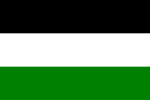









.svg.png)

.svg.png)
.svg.png)
.svg.png)

.svg.png)

.svg.png)
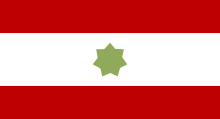

Asia
.svg.png)
.svg.png)
.svg.png)
.svg.png)

.svg.png)
.svg.png)

.svg.png)

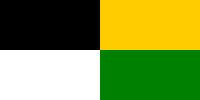



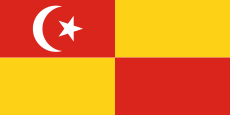



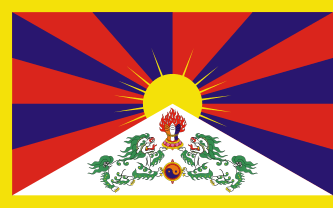
Europe
.svg.png)

.svg.png)

Sub-Saharan Africa
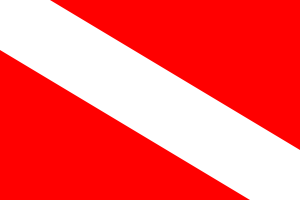

.svg.png)
.svg.png)
.svg.png)
.svg.png)
.svg.png)
.svg.png)
.svg.png)

.gif)
.svg.png)

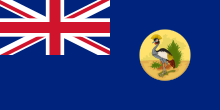

.svg.png)
*protectorates which existed alongside a colony of the same name
.svg.png)
Oceania

.svg.png)

.svg.png)


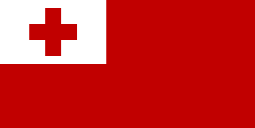
Chinese protectorates
- Han dynasty:
- Tang dynasty:
- Yuan dynasty:
- People's Republic of China:
- Chinese Protectorate, for the well-being of ethnic Chinese residents of the Straits Settlements during that territory's British colonial period
Dutch protectorates
- Aruba
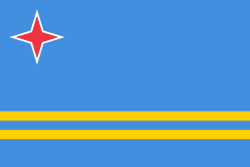
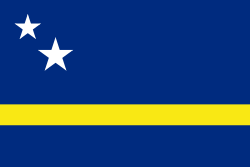
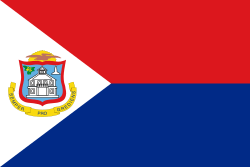
.svg.png)
- Various sultanates in the Dutch East Indies (present Indonesia)
- Trumon Sultanate (1770?), Langkat Sultanate (26 October 1869), Deli Sultanate (22 August 1862), Asahan Sultanate (27 September 1865), Siak Sultanate (1 February 1858) and Indragiri Sultanate (1838?) in Sumatra
- Jogjakarta Sultanate (13 February 1755), Mataram Empire and Surakarta Sunanate (26 February 1677), Duchy of Mangkunegara (24 February 1757) and Duchy of Paku Alaman (22 June 1812) in Java.
- Sumbawa Sultanate (?) and Bima Sultanate (8 December 1669) in Lesser Sunda Islands.
- Pontianak Sultanate (16 August 1819), Sambas Sultanate (1819), Kubu Sultanate (4 June 1823), Landak Sultanate (?), Mempawah Sultanate (?), Matan Sultanate (?), Sanggau Sultanate (?), Sekadau Sultanate (?), Simpang Sultanate (?), Sintang Sultanate (1822), Sukadana Sultanate (?), Kota Waringin Sultanate (?), Kutai Kertanegara Sultanate (8 August 1825), Gunung Tabur Sultanate (?) and Bulungan Sultanate (?) in Borneo.
- Gowa Sultanate (1669), Bone Sultanate (?), Sidenreng Sultanate (?), Soppeng Sultanate (?), Butung Sultanate (?), Muna Sultanate (?) and Banggai Sultanate (?) in Celebes.
- Ternate (12 October 1676) and Batjan Sultanate (?) in The Moluccas.
- Kaimana Sultanate (?) in Dutch New Guinea.
French protectorates
- Saar Protectorate
.svg.png)
Asia
Arab world and Madagascar
- Comoros 21 April 1886 French protectorate (Anjouan) until 25 July 1912 when annexed.
- Present Djibouti was originally, since 24 June 1884, the Territory of Obock and Protectorate of Tadjoura (Territoires Français d'Obock, Tadjoura, Dankils et Somalis), a French protectorate recognized by Britain on 9 February 1888, renamed on 20 May 1896 as French Somaliland (Côte Française des Somalis).
- Mauritania on 12 May 1903 French protectorate; within Mauritanian several traditional states:
- Adrar emirate since 9 January 1909 French protectorate (before Spanish)
- The Taganit confederation's emirate (founded by Idaw `Ish dynasty), since 1905 under French protectorate.
- Brakna confederation's emirate
- Emirate of Trarza: 15 December 1902 placed under French protectorate status.
- Morocco

- The northern part of Morocco was under Spanish protectorate in the same period.
- Traditional Madagascar States
- Kingdom of Imerina

- Kingdom of Imerina
- Tunisia

Sub-Saharan Africa
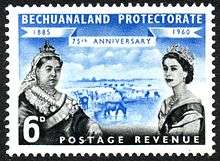
The legal regime of "protection" was the formal legal structure under which French colonial forces expanded in Africa between the 1830s and 1900. Almost every pre-existing state in the area later covered by French West Africa was placed under protectorate status at some point, although direct rule gradually replaced protectorate agreements. Formal ruling structures, or fictive recreations of them, were largely retained as the lowest level authority figure in the French Cercles, with leaders appointed and removed by French officials.[13]
- Benin traditional states
- Independent of Danhome
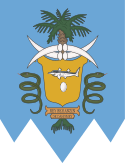
- Porto-Novo a French protectorate, 23 February 1863 – 2 January 1865. Cotonou a French Protectorate, 19 May 1868. Porto-Novo French protectorate, 14 April 1882.
- Independent of Danhome
- Central African Republic traditional states:
- French protectorate over Dar al-Kuti (1912 Sultanate suppressed by the French), 12 December 1897
- French protectorate over the Sultanate of Bangassou, 1894
- Burkina Faso was since 20 February 1895 a French protectorate named Upper Volta (Haute-Volta)
- Chad: Baghirmi state 20 September 1897 a French protectorate
- Côte d'Ivoire: 10 January 1889 French protectorate of Ivory Coast
- Guinea: 5 August 1849 French protectorate over coastal region; (Riviéres du Sud).
- Niger, Sultanate of Damagaram (Zinder), 30 July 1899 under French protectorate over the native rulers, titled Sarkin Damagaram or Sultan
- Senegal: 4 February 1850 First of several French protectorate treaties with local rulers
Oceania
- French Polynesia
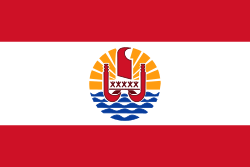
- Otaheiti (native king styled Ari`i rahi) becomes a French protectorate known as Tahiti, 1842–1880
- Raiatea and Tahaa (after temporary annexation by Otaheiti; (title Ari`i) a French protectorate, 1880)
- Mangareva (one of the Gambier Islands; ruler title `Akariki) a French protectorate, 16 February 1844 (unratified) and 30 November 1871[15]
- Wallis and Futuna:
German protectorates
The German Empire used the word Schutzgebiet, literally protectorate, for all of its colonial possessions until they were lost during World War I, regardless of the actual level of government control. Cases involving indirect rule included:
- German New Guinea
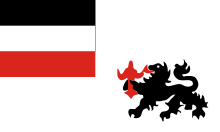
- Marshall Islands

- Nauru

- North Solomon Islands
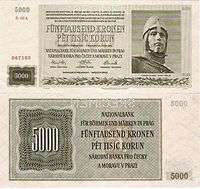 Banknotes of the Protectorate of Bohemia and Moravia, 1939–1945
Banknotes of the Protectorate of Bohemia and Moravia, 1939–1945 - Samoa, formerly Western Samoa
- Sultanate of Witu, called Wituland

- German South-West Africa (later Namibia)
- Togoland
- Rwanda, a Resident with the native Mwami (king)
- Urundi, a Resident with the native Mwami (king; 1908 Sultan)
Before and during World War II, Nazi Germany designated the rump of occupied Czechoslovakia and Denmark as protectorates:
- Protectorate of Bohemia and Moravia
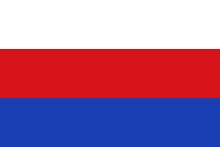
- Denmark

Indian protectorates
Italian protectorates
In Europe:
- The Albanian Republic

.svg.png)
- Independent State of Croatia

- Monaco

In the colonial empire:
- Ethiopia

- Libya: on 15 October 1912 Italian protectorate declared over Cirenaica (Cyrenaica) until 17 May 1919.
- Somalia: 3 August 1889 Benadir Coast Italian protectorate (in the northeast; unoccupied until May 1893), until 16 March 1905 when it changed to Italian Somaliland.
- Majeerteen Sultanate

- Sultanate of Hobyo

- Majeerteen Sultanate
Japanese protectorates
- Korean Empire (1905–1910)
.svg.png)
- Empire of Manchuria (1932~1945)
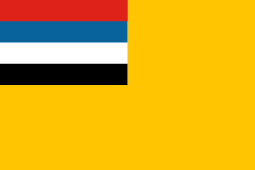
- Philippines (1942~1945)

Polish protectorates
- Kaffa (1462–1475)
Portuguese protectorates
- Kingdom of Kongo (1390–1914)
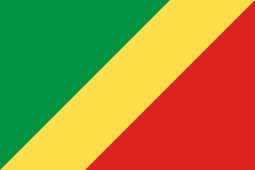
- Cabinda (Portuguese Congo) (1885–1974)—Portugal first claimed sovereignty over Cabinda in the February 1885 Treaty of Simulambuco, which gave Cabinda the status of a protectorate of the Portuguese Crown under the request of "the princes and governors of Cabinda".
- Gaza Empire (1824–1895)

- Angoche Sultanate (1903–1910)
Russian protectorates
- Kingdom of Kartli-Kakheti (1783–1801)

- Kingdom of Imereti (1804–1810)
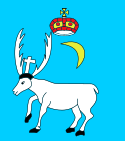
- Revolutionary Serbia (1807–12)
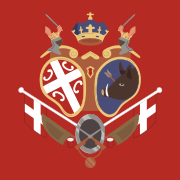

- Uryankhay Krai (1914)
.svg.png)
- Emirate of Bukhara (1873–1920)

- Khanate of Khiva (1873–1920)

- Second East Turkestan Republic (1919-1949)
Spanish protectorates
- Spanish Morocco

Swedish protectorates
- Norway
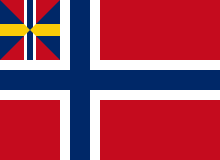
Argentine protectorates
- Tierra del Fuego

- Peru
.svg.png)
- Paraguay

- Uruguay

- Gobierno del Cerrito
.svg.png)
- Patria Nueva: Chile
.svg.png)
- Upper Peru: Bolivia

United States Protectorates
- Republic of Texas
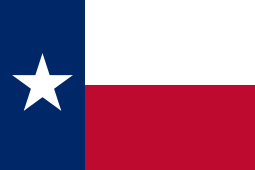
- Liberia

- Cuba
.svg.png)
- Haiti
.svg.png)
- Mexico
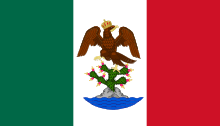
- Honduras
.gif)
- Nicaragua
.svg.png)
- Panama Canal Zone

- Dominican Republic

- Sultanate of Sulu
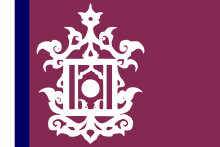
- Germany
.svg.png)
- Japan

- South Korea
.svg.png)
- Ryukyu Islands
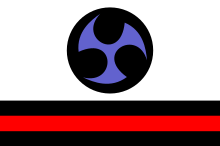
- Philippines
.svg.png)
- Hawaii
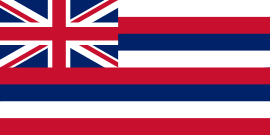
- Compact of Free Association
- The Marshall Islands
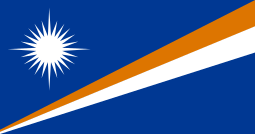
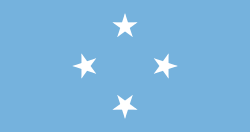
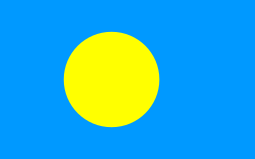
Contemporary usage by the United States
Some agencies of the United States government, such as the United States Environmental Protection Agency, still use the term protectorate to refer to insular areas of the United States such as Guam, the Northern Mariana Islands, Puerto Rico and the U.S. Virgin Islands. This was also the case with the Philippines and (it can be argued via the Platt Amendment) Cuba at the end of Spanish colonial rule. Liberia was the only African nation that was a colony for the United States but the government had no control over the land as it was controlled by the privately owned American Colonization Society. It was, however, a protectorate from January 7, 1822 until the Liberian Declaration of Independence from the American Colonization Society in July 26, 1847. Liberia was founded and established as a homeland for freed African-Americans and ex-Caribbean slaves who left the United States and the Caribbean islands with help and support from the American Colonization Society. However, the agency responsible for the administration of those areas, the Office of Insular Affairs (OIA) within the United States Department of Interior, uses only the term "insular area" rather than protectorate.
United Nations protectorates
- West Papua
.svg.png)
- Cambodia
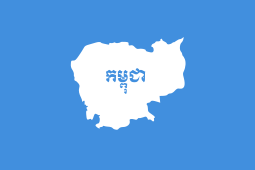
- Eastern Slavonia, Baranja and Western Syrmia

- East Timor
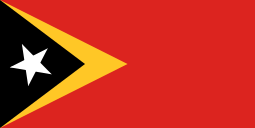
- Kosovo

Joint protectorates
- The Adriatic Republic of Ragusa
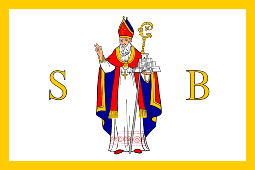
- The United States of the Ionian Islands


- Bosnia and Herzegovina


See also
- British Protected Person
- Dominion
- European Union Police Mission in Bosnia and Herzegovina
- EUFOR Althea
- High Representative for Bosnia and Herzegovina
- Peace Implementation Council
- Protector (titles for Heads of State and other individual persons)
- Puerto Rico
- Tributary (political)
- Tribute
- Vassal state
Notes
- Dumieński, Zbigniew (2014). "Microstates as Modern Protected States: Towards a New Definition of Micro-Statehood" (PDF). Occasional Paper. Centre for Small State Studies. Retrieved 20 August 2014. Cite journal requires
|journal=(help) - Bedjaoui, Mohammed (1991), International Law: Achievements and Prospects, Martinus Nijhoff Publishers, pp. 51–, ISBN 92-3-102716-6
- "Histories of the Modern Middle East". Laits.utexas.edu. Retrieved 21 April 2019.
- Cunningham, Joseph Davy (1849). A History of the Sikhs: From the Origin of the Nation to the Battles of the Sutlej. John Murray.
- Meyer, William Stevenson (1908). "Ferozepur district". The Imperial Gazetteer of India. XII. p. 90.
But the British Government, established at Delhi since 1803, interevened with an offer of protection to all the CIS-SUTLEJ STATES; and Dhanna Singh gladly availed himself of the promised aid, being one of the first chieftains to accept British protection and control.
- Onley, The Raj Reconsidered (2009), p. 50.
- "Timeline – Story of Independence". Archived from the original on 2019-07-27. Retrieved 2020-05-11.
- "Info" (PDF). himalaya.socanth.cam.ac.uk. Retrieved 2020-04-20.
- "Histories of the Modern Middle East". Laits.utexas.edu. Retrieved 21 April 2019.
- "A History of Korea: From Antiquity to the Present, by Michael J. Seth", p112
- Bedjaoui, Mohammed (1 January 1991). International Law: Achievements and Prospects. Martinus Nijhoff Publishers. ISBN 9231027166 – via Google Books.
- Capaldo, Giuliana Ziccardi (1 January 1995). Repertory of Decisions of the International Court of Justice (1947–1992). Martinus Nijhoff Publishers. ISBN 0792329937 – via Google Books.
- See the classic account on this in Robert Delavignette. Freedom and Authority in French West Africa. London: Oxford University Press, (1950). The more recent statndard studies on French expansion include:
Robert Aldrich. Greater France: A History of French Overseas Expansion. Palgrave MacMillan (1996) ISBN 0-312-16000-3.
Alice L. Conklin. A Mission to Civilize: The Republican Idea of Empire in France and West Africa 1895–1930. Stanford: Stanford University Press (1998), ISBN 978-0-8047-2999-4.
Patrick Manning. Francophone Sub-Saharan Africa, 1880–1995. Cambridge University Press (1998) ISBN 0-521-64255-8.
Jean Suret-Canale. Afrique Noire: l'Ere Coloniale (Editions Sociales, Paris, 1971); Eng. translation, French Colonialism in Tropical Africa, 1900 1945. (New York, 1971). - C. W. Newbury. Aspects of French Policy in the Pacific, 1853–1906. The Pacific Historical Review, Vol. 27, No. 1 (Feb., 1958), pp. 45–56
- Gonschor, Lorenz Rudolf (August 2008). Law as a Tool of Oppression and Liberation: Institutional Histories and Perspectives on Political Independence in Hawaiʻi, Tahiti Nui/French Polynesia and Rapa Nui. Honolulu: University of Hawaii at Manoa. pp. 56–59. hdl:10125/20375.
References
- "Index of Colonies and Possessions". World Statesmen.org. Retrieved 2008-08-06.
French
- Larousse, Pierre; Paul Augé; Claude Augé (1925). Nouveau Petit Larousse Illustré: Dictionnaire Encyclopédique. Larousse.